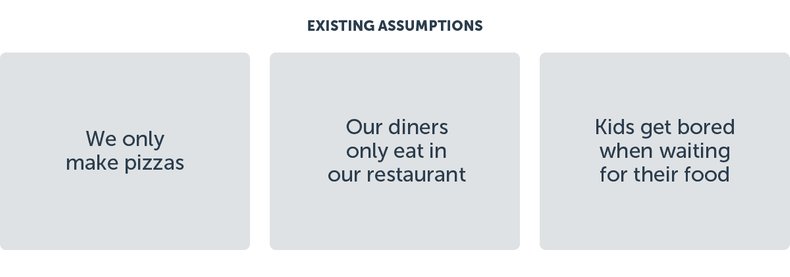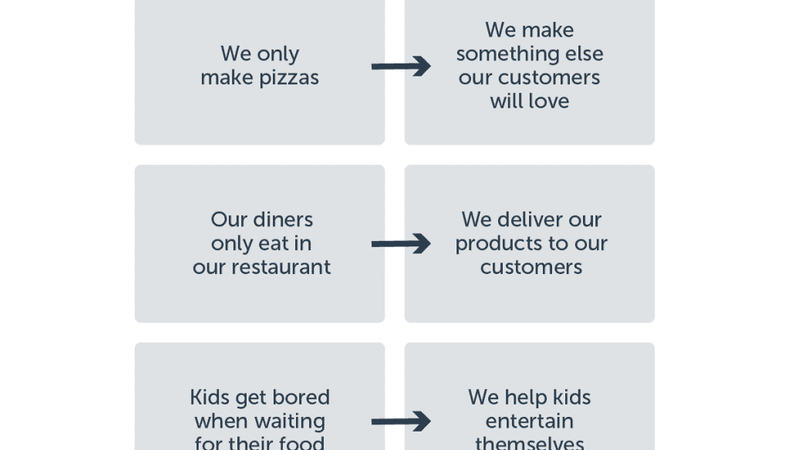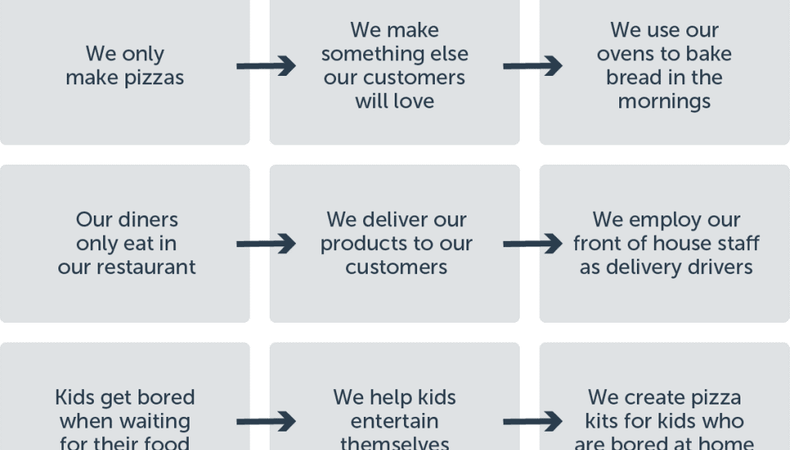How brands can adapt in a crisis
Heraclitus, a Greek philosopher is quoted as saying “Change is the only constant in life.” Nothing ever stays the same and amid the upheaval and distress of COVID-19 this seems more apparent than ever. Our world as we know it has been turned upside down in such a short time and we need to adapt to survive.
There have been some heartwarming stories of how communities have rallied together to help the vulnerable. Incredible examples of how people have adapted to new situations and embraced a new way of life.
Brands, just like the people they serve, need to collaborate and improvise too. In times of great uncertainty, people’s routines and purchasing habits go out the window, which opens up the opportunity for brands who can pivot operations and invest in new technologies to adapt to the changing climate.
Michael Michalko created a technique called ‘reverse assumptions’. It is a technique that encourages us to challenge existing assumptions and devise solutions in a situation where these assumptions are reversed. This exercise stimulates innovation and can help brands radically adapt to any given situation.
Several leading brands have successfully adapted to the recent changing conditions to navigate their way through these difficult times. They have learnt to play a role in easing people’s concerns and sense of isolation. Many brands have generated messages of solidarity and hope; some have helped their employees feel more secure and some have made practical contributions to the fight against the virus.
Examples of how brands have adapted
Brewdog is making hand sanitiser at their distillery in response to the nation’s shortage, a portion of which they are donating to the NHS and local charities.
Dyson has refocussed its technical prowess on the design and production of a ventilator. This device can be manufactured quickly and efficiently in its production plant and is donating 5,000 units to the international effort to tackle the pandemic.
David Lloyd Clubs throughout the land have closed their doors to stop the spread of the virus but are holding virtual workout sessions so the nation can stay physically and mentally healthy at home.
Burberry is leveraging its supply chain to make deliveries of medical equipment and retooling its factories to manufacture hospital gowns and surgical masks for medical staff and patients.
There are many examples of the way smaller businesses have adapted and innovated too. Local restaurants have pivoted to Deliveroo who have dropped onboarding fees for new signups. Some businesses are using remote working to protect their employees and moving their cores services online to support their clients.
A simple method to help your brand adapt
So how can your brand innovate using the reverse assumptions technique? How can you adapt to this unprecedented situation and deliver something of value? Assumption reversal allows you to take your assumptions and turn them on their head to create something new and different. We’ll walk you through each step below:
Step 1:
So how can your brand innovate using the reverse assumptions technique? How can you adapt to this unprecedented situation and deliver something of value? Assumption reversal allows you to take your assumptions and turn them on their head to create something new and different. We’ll walk you through each step below:

Step 2:
With the list of assumptions posted on a virtual whiteboard, you can then go over those assumptions one by one, and come up with a statement reversing the assumption. For example:

Step 3:
Following the reversal, you can then come up with design ideas for the reversed assumptions, these can sometimes range from surprisingly practical to the crazy, but don’t let this limit you at this stage. Let your imagination run riot. For example:

Step 4:
Collectively discuss and vote on the three most interesting solutions. You can then move these ideas through to the prototyping phase.
Step 5:
Prototyping is the magic that makes design thinking more powerful than traditional thinking. It adds the making step between knowing and doing. What’s a prototype? It’s simply a rough approximation of an idea, product, service, or process—whatever it is you’re inventing. It can be a mockup, a sketch, a storyboard, a customer journey map or some role-playing.
This stage serves as an exploratory phase to test and gather as much feedback as possible. It could highlight immediate problems which were missed during the ideation stages. If this is the case, then you may need to go back a few steps to solve them. Alternatively, you can always reiterate the prototype, until you have a perfect idea to take forward.
Design thinking is a powerful tool for brands
Charles Darwin observed, “In the long history of humankind those who learned to collaborate and improvise most effectively have prevailed.” Using design thinking techniques will help your brand evolve and emerge from this crisis stronger than ever. Reverse assumptions are just one part of the design thinking toolkit we use at Firebrand. We have a collection of tools which can help your brand innovate and are happy to share them with you – free of charge. Just drop us an email [email protected].
We recently recorded a Podcast to help Sussex businesses understand how branding can help them. In it, our brand director Michael Dale gives insights about how businesses can adapt and pivot in the current situation. Click here to check out our podcast.
